Do you have news to share? Let us know!
Associate Professor of Music Education, Dr. Lisa Koops, awarded Grammy Foundation Grant
From May 8, 2017 The Daily Article
Singing together in the car or a lullaby before bed, discussing issues of power and privilege raised in the musical Hamilton, or improvising lyrics to a catchy melody—these are among the many ways music can be its own instrument in interactions between parents and children.
These parent-child activities are at the heart of a new grant from the Grammy Foundation to support the research of Lisa Koops, an associate professor of music education at Case Western Reserve University.
 The Recording Academy, which presents the Grammy Awards—among the music industry’s highest recognitions—also supports the Grammy Foundation.
The Recording Academy, which presents the Grammy Awards—among the music industry’s highest recognitions—also supports the Grammy Foundation.
Documenting how parents’ musical practices, beliefs and perceptions influence the early development of their children, Koops will spend time over the next year with eight extended families of diverse cultural, ethnic and familial backgrounds and neighborhoods in Northeast Ohio.
“I want to reach a better and broader understanding of how families deploy music in different situations—be it using calming songs to quiet an argument among siblings or holding a dance party when feeling cooped up during the winter,” said Koops, who also teaches classes at The Music Settlement in Cleveland.
The project will yield a book on “musical parenting and parenting musically” that shares the stories of the eight families, woven together with data Koops has collected with Cleveland-area families during research studies over the last nine years, in ways that illustrate the range, depth and dynamic force of music.
Koops will also document the reasoning or pressures behind musical parenting choices, such as beliefs that learning to play an instrument gives students an advantage academically or will help them gain entrance to college.
The findings will complement a growing body of scientific studies, including brain scans, showing how musical interactions are associated with linguistic, motor, cognitive and empathetic improvements.
“While ongoing research will help paint a fuller picture of how music can be used to aid development and personal success,” Koops said, “it’s also important to not lose sight of making music for music’s sake, such as learning the skills to play an instrument or sing in tune.”
In early March, Koops’s research also received support from the university’s ACES+ Program, in the form of an Advance Opportunity Grant. All faculty are eligible for these awards that supply supplemental support.
Each year, the Grammy Foundation funds academic research to learn more about the “impact of music on the human condition” and to advance “understanding, appreciation and advancement of the contribution of recorded music to American culture—from the artistic and technical legends of the past to the still unimagined musical breakthroughs of future generations of music professionals.”
Seven out of Nine CAS Faculty Win ACES+ 2017 Opportunity Awards
ACES+, the continuation of the Academic Careers in Engineering & Science (ACES) program, announced the recipients of the 2017 ADVANCE Opportunity Grant Awards.
Nine proposals representing academic disciplines–ranging from nursing to engineering to psychological sciences–have been awarded a total of $31,510.
“We’re thrilled to have the support of President Barbara R. Snyder and Provost Bud Baeslack to continue these awards,” said Lynn Singer, deputy provost and vice president for academic affairs.
ADVANCE Opportunity Grants are competitive annual awards selected by the Opportunity Grant Oversight Committee, who reviewed a total of 18 proposals in 2017. Opportunity grants, first launched in 2004 under the NSF-ADVANCE grant ACES, provide small amounts of supplemental support to current or proposed projects and activities where funding is difficult to obtain through other sources. All Case Western Reserve University faculty members are eligible to apply.
According to the Office of the Provost, the following is a list of 2017 ADVANCE Opportunity Grant Award winners and information about their projects:
Jean Burns, Department of Biology, College of Arts and Sciences
Award: $3,200 to conduct research on isolating mechanisms in the soil that influence plant performance.
Lauren Calandruccio, Department of Psychological Sciences, College of Arts and Sciences
Award: $2,500 to investigate the relationship between reading ability and speech perception in noise.
Haomin Gong, Department of Modern Languages and Literatures, College of Arts and Sciences
Award: $1,800 to publish books on internet culture and ecocinema.
Lisa Huisman Koops, Department of Music, College of Arts and Sciences
Award: $2,680 to conduct research for musical parenting–musical practices, beliefs and perceptions of parents of children ages birth to 10.
Amy Przeworski, Department of Psychological Sciences, College of Arts and Sciences
Award: $5,600 to examine the phenomenology of child hoarding.
Cheryl Toman, Department of Modern Languages and Literatures, College of Arts and Science
Award: $3,200 to research women’s writings in literature and music in Mali.
Susanne Vees-Gulani, Department of Modern Languages and Literature, College of Arts and Sciences
Award: $2,200 to continue the research on the myth of Dresden: origins and manifestations of the Dresden bombing narrative and the PEGIDA movement.
Professor John Protasiewicz Receives Mandel Award for Outstanding Chemistry Faculty

For John Protasiewicz, going green is about more than sustainability. It signals a supportive, more collaborative approach—something altogether different from the high-stress, pressure-cooker environment evoked by bright red. It represents one of many reasons why Protasiewicz won the Mandel Award for Outstanding Chemistry Faculty this year. Endowed by accomplished business leader and philanthropist Mort Mandel, the honor reflects his long-held belief in the importance of exceptional individuals to organizations’ success.
With accomplishments extensive enough to become a fellow of the leading academic chemistry organizations in both the United States and Europe, Protasiewicz’s scientific acumen is obvious, but his commitment to other faculty truly distinguishes him as a colleague.
A professor and associate department chair, Protasiewicz launched an initiative six years ago where younger faculty come together to assist one another on grant applications well in advance of any looming due dates. The goal is to create a welcoming environment of peers and ultimately enhance funding success rates. He dubbed the effort the “Green Team.”
The name was designed to draw a contrast to the far more common “red teams,” where academic departments form teams of distinguished senior faculty to deliver critiques often only a week or days prior to submission deadlines.
“With the Green Team, I wanted to create a less stressful environment to encourage peer review of proposals,” Protasiewicz said. “One where we met more frequently and learned from each other as a team.” A number of the Green Team members have successfully earned prestigious National Science Foundation CAREER Awards.
Through his research laboratory, Protasiewicz also mentors students ranging from high school to the post-doctorate level, some going on to research and faculty positions at highly ranked colleges and universities.
While he helps colleagues and students advance their own work, Protasiewicz has built an impressive research portfolio of his own.
His studies look for new luminescent molecules and materials based on novel combinations of organic and inorganic elements—materials that could yield new insights and properties that might be useful in electronic devices like lightweight, flexible digital displays and solar cells.
Another area of emphasis involves the field of chemical catalysis—converting cheap chemicals into more useful materials, for example, into valuable plastics or drugs.
In addition, a partnership with chemistry Professor Daniel Scherson led to the discovery of new Flame Retardant Ions (FRIONs) for potential use in lithium ion batteries to prevent them from catching fire without losing battery capacity—a problem recently seen with the recalled Samsung Galaxy Note 7 phones.
The award—made possible by Mort Mandel’s gift through the Morton and Barbara Mandel Family Foundation—reflects the gratitude of a graduate who received his bachelor’s degree in chemistry in 2013. It also exemplifies the spirit of his 2012 book It’s All About Who… You Hire, How They Lead…and Other Essential Advice from a Self-Made Leader.
Protasiewicz agrees.
“I’m honored and extremely grateful for this recognition,” he said. “It rewards individuals beyond scientific achievement, which you don’t see often enough.”
Cassi Pittman awarded Career Enhancement Fellow
 Cassi Pittman, associate professor of sociology, has been awarded a Career Enhancement Fellow by the Woodrow Wilson National Fellowship Foundation, which administers funds for the program provided by the Andrew W. Mellon Foundation.
Cassi Pittman, associate professor of sociology, has been awarded a Career Enhancement Fellow by the Woodrow Wilson National Fellowship Foundation, which administers funds for the program provided by the Andrew W. Mellon Foundation.Michael Hinczewski, Assistant Professor in Physics, One of Three NSF CAREER Award Winners
Three Case Western Reserve University junior faculty members have received National Science Foundation Faculty Early Career Development (CAREER) grants, totaling nearly $1.7 million.
The five-year grants support research into:
- Movements of nanoparticles through confined spaces, with applications to food source security and water purification;
- The formation and regulation of protein bonds between cells; and
- A deep look into the physics and variables in 3-D printing processes of metal parts.
The research projects also include education, mentorship and outreach to graduate, undergraduate and K-12 students.
Michael Hinczewski
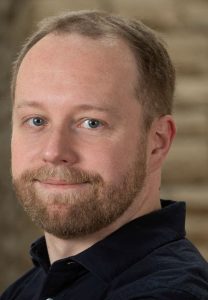
Michael Hinczewski
Healthy cells have their own version of Chinese finger traps, called catch-bonding. These bonds are formed by protein molecules at the cell surface, and the greater the force pulling them apart, the longer the bond between them lasts.
Assistant Physics Professor Mike Hinczewski, who received a $656,866 award, will develop theories help uncover the structural details of catch-bonding from experimental data.
“The heart of this project is to figure out how catch-bonding occurs in a variety of protein systems in very different biological contexts,” he said. “Can all these systems be described by similar mechanisms?”
Catch bonds have been found in proteins that recruit white blood cells from a rushing blood stream, as well as at the junctions between neighboring cells in tissues, Hinczewski explained. The mechanical forces which naturally occur in these cases, due to the fluid flow or the tension in the tissue, change the protein shape, increasing the bond lifetime.
“Researchers are just beginning to explore in depth how force regulates adhesion between cells and its potential implications for the human immune system and diseases like cancer,” he said.
Hinczewski’s lab will use feedback between theory and data to develop mathematical and structural models, elucidating these counter-intuitive protein finger traps.
To read more visit: http://thedaily.case.edu/three-case-western-reserve-university-faculty-awarded-nsf-career-grants/
Dr. Stacy McGaugh, Chair, Department of Astronomy, Case Western Reserve University Appears on NPR to Discuss Dark Matter
You probably have heard of Dark Matter, that unknown sub stance that makes up most of the universe? But what if Dark Matter isn’t real? Or what if it’s based on wrong physics? On March 13, 2017 McGaugh joined the Science Cafe Edition of The Sound of Ideas explaining why understanding Dark Matter matters. McGaugh also presented that evening at Music Box Super Club as part of Science Cafe about Dark Matter or Modified Gravity? What the Acceleration Scale in Galaxies Suggests. To see the NPR talk visit here.
stance that makes up most of the universe? But what if Dark Matter isn’t real? Or what if it’s based on wrong physics? On March 13, 2017 McGaugh joined the Science Cafe Edition of The Sound of Ideas explaining why understanding Dark Matter matters. McGaugh also presented that evening at Music Box Super Club as part of Science Cafe about Dark Matter or Modified Gravity? What the Acceleration Scale in Galaxies Suggests. To see the NPR talk visit here.
Political Science’s Karen Beckwith Wins Grant for Upcoming Book
 The American Political Science Association (APSA) has awarded a Centennial Center for Political Science and Public Affairs grant to Karen Beckwith, the Flora Stone Mather Professor and chair of the Department of Political Science.
The American Political Science Association (APSA) has awarded a Centennial Center for Political Science and Public Affairs grant to Karen Beckwith, the Flora Stone Mather Professor and chair of the Department of Political Science.
The APSA’s Presidency Research Fund will support Beckwith’s research for her upcoming book Cabinets, Ministers, and Gender, co-authored with Claire Annesley, professor and chair of the Politics Department at the University of Sussex, and Susan Franceschet, professor of political science at the University of Calgary.
Founded in 1903, the APSA, according to its website, “is the leading professional organization for the study of political science and serves more than 13,000 members in more than 80 countries.”
Two Art History Faculty Win Prestigious NEH Fellowships
Posted on December 20, 2016
Odds are long for any application for a National Endowment for the Humanities (NEH) fellowship—only about 7 percent are awarded. Even longer are the odds that two professors from the same department each receive one of the prestigious grants in the same year.
Unlikely as it may be, Erin Benay and Maggie Popkin, both assistant professors of art history at Case Western Reserve University, were each chosen for a fellowship from more than 1,200 applicants. They were selected for their separate—but thematically similar—research projects on the role art has played in the construction of knowledge and cultural exchanges among faraway places and people in history.
Maggie Popkin
Souvenirs, Memorabilia, and the Construction of Knowledge in the Roman Empire
Buying a souvenir from a vacation spot or taking a keepsake on travels as a reminder of home are phenomena that unite almost all cultures and people. Ancient Romans were no different.

Maggie Popkin
Hundreds of souvenirs from the Roman Empire have been found as far apart as North Africa, Spain and Germany, including mugs and glass drinking cups with depictions of gladiators and chariot racing; miniature replicas of statues; and vases with etchings of famous cities and monuments—some even personalized with inscriptions by their once-owners.
In an empire where most people were illiterate, the visual communication accomplished by souvenirs and memorabilia was an important means of constructing knowledge of people, places, and events.
“With no cameras, TV, newspapers, or Internet, souvenirs served a more vital function in communicating and expressing ideas about a place than they do now,” Popkin said. “Romans wanted to remember what was special about where they had been, or about a sport they loved. In fact, Romans were often buried with their souvenirs and memorabilia.”
With little existing scholarship on these objects—perhaps because no Greek or Latin words survive that are modern equivalents of “souvenirs” or “memorabilia”—Popkin will use her NEH grant to research Roman souvenirs in European and American collections and write a book about their powerful role in shaping knowledge in the Roman Empire.
Erin Benay
Italy by Way of India: Routes of Devotional Knowledge in the Early Modern Period
According to legends, the body of Saint Thomas—martyred in the first century—was miraculously transported from India to Italy over 1,200 years later. It was the divine will of the saint himself to have a European resting place where he could be worshipped, venerated and facilitate pilgrimages.

Erin Benay
Both sites—his “original” burial site in Chennai, India, and the “new” one in Ortona, Italy—claimed to house his relics.
In India, a sizable devotional cult grew and thrived—calling themselves Thomas Christians—while his Italian resting place enjoyed middling popularity.
“I want to know how cultural practices developed around these relics, which are claimed to be in two very different places,” Benay said. “In this case, what people believe and how they fashioned visual images around Thomas’s cult may be more interesting than the actual truth regarding the location of Thomas’s body.”
During and after the Renaissance, trading routes increased the exchange of knowledge and cultural products (and tea, spices and other goods). In India, evidence of these influences can be seen in objects (such as sculptures, liturgical vessels, reliquaries) that merge Christian and Hindu iconographies that are part of the Thomas Christian aesthetic.
Benay will use her NEH grant to travel to both countries to study obscure objects—some catalogued for the first time—that are now stored in church basements, and are lacking proper care.

International Shrine of St.Thomas Basilica in Chennai, India / St. Thomas by Simon Antony is licensed under CC BY 2.0
This research could reshape the narrative of how knowledge of Asia took shape during the Renaissance.
“The combination of global mobility and trade affected how cultures saw and knew each other,” she said. “Rather than understand the Renaissance as a passive phenomenon in which European explorers simply consumed foreign cultures, this work shows that more complicated transcultural relationships emerged.”
“Studying this particular example will help illuminate the ways in which the Renaissance was far more global than is often realized,” Benay added.
About the grants
Starting in fall 2017, Popkin and Benay will take a year of leave from teaching and university service to write books based on their research.
 “There are few grants in the humanities as prestigious or as competitive as the NEH grants,” said Catherine Scallen, chair of the Departments of Art History and Art and the Andrew W. Mellon Professor of the Humanities. “For two assistant professors in our small art history department to be awarded at the same time is a tremendous affirmation of our faculty’s innovative scholarship and richly deserved by Professors Benay and Popkin.”
“There are few grants in the humanities as prestigious or as competitive as the NEH grants,” said Catherine Scallen, chair of the Departments of Art History and Art and the Andrew W. Mellon Professor of the Humanities. “For two assistant professors in our small art history department to be awarded at the same time is a tremendous affirmation of our faculty’s innovative scholarship and richly deserved by Professors Benay and Popkin.”
The NEH is an independent federal agency and one of the largest funders of humanities programs in the country.
This article was originally published Dec. 19 from thedaily.case.edu
Malaria detection device faster, more accurate than current methods
Posted on Nov 4, 2016
A Case Western Reserve team from international health and physics has won national recognition for a portable malaria detection device with the potential to transform diagnosis and treatment of the disease in developing countries.
The team is one of four recipients of the U.S. Patent and Trademark Office’s Patent for Humanity Award in the category of medicine, and will be honored later this month at a White House ceremony.
International health professor Brian Grimberg and physics professor Robert Brown led the group that developed the portable, battery-operated Magneto-Optical Detector (MOD), which uses magnets and lasers to detect malaria in one minute—20 times faster than the time needed to secure results with traditional rapid-test methods. In addition, the MOD device is more accurate and less expensive; each test costs only $1 to conduct.

Robert Brown
Malaria has killed more people than any other disease caused by a single organism, including small pox and the plague. While the industrialized world has been rid of malaria for 50 years, the disease continues to affect the health and quality of life of impoverished populations. Even today, malaria is actively transmitted within 97 countries.
According to the World Health Organization (WHO), half of the world’s population, an estimated 3.4 billion people, is at risk. Of these, 1.2 billion are at high risk. In 2015, WHO estimates, 214 million people contracted malaria, and 438,000 of them died—even though the disease is preventable and treatable.
“We wanted to address a big gap in identifying people with malaria,” Grimberg said. “It is hard to diagnose the disease accurately using current technology. The standard microscope test can generate up to 36 percent false positives and nearly 18 percent false negatives. This means that many people infected with malaria are untreated and can die of the disease. Many others who don’t have malaria receive anti-malarial drugs unnecessarily, which wastes tight resources and contributes to drug resistance.”
The MOD device detects malaria by looking for a specific type of iron within a single drop of blood. Called hemozoin, it is released by disease-carrying parasites release in crystal form. Because hemozoin has magnetic properties; when the device’s magnets get close to the blood sample, the once-randomly oriented hemozoin crystals align. Less laser light can pass through the more closely aligned crystals, giving those conducting the test a quick and definitive indicator regarding whether malaria is present.
“The Department of Physics has long been involved with cutting edge research in a variety of fields, from dark matter research to MRI (Magnetic Resonance Imaging),” said Brown, a Distinguished University Professor. “My colleagues on the malaria team and I work extensively in magnetic field research and fluid dynamics of magnetic and partially magnetic particles, which made it a natural fit to explore the particles created by malaria parasites. It is especially rewarding to our group to be able to work on both fundamental physics problems and applications toward improving the human condition.”
In addition to Grimberg and Brown, the team included senior research scientist Robert Deissler, mechanical designer/machinist Richard Bihary, visiting scientist William Condit, and undergraduate/technician Jason Jones, now graduated. Except for Grimberg, who has been involved with the project since its very beginning, the team comes entirely from the physics department.
 Grimberg estimates that MOD can save anti-malaria organizations $1.2 billion annually on direct diagnostic savings, increased workforce productivity, and more efficient allocation of prevention and treatment resources. Also, MOD testing is easily administered outside of laboratory facilities, including in community and remote settings. As a result, care workers will be able to bring accurate malaria testing and diagnosis to the patient, instead of requiring the patient to travel as many as 30 hours each way to a health clinic.
Grimberg estimates that MOD can save anti-malaria organizations $1.2 billion annually on direct diagnostic savings, increased workforce productivity, and more efficient allocation of prevention and treatment resources. Also, MOD testing is easily administered outside of laboratory facilities, including in community and remote settings. As a result, care workers will be able to bring accurate malaria testing and diagnosis to the patient, instead of requiring the patient to travel as many as 30 hours each way to a health clinic.
Grimberg and his colleagues have conducted field trials of the MOD in the Amazon rainforest and Kenya. The team is collaborating with Portland, Oregon-based Hemex Health, which has licensed the MOD. Hemex will develop and commercialize the device for wider use.
“We are excited to have joined forces with Dr. Grimberg and his team to dramatically increase the odds for the successful diagnosis and treatment of malaria, which remains a devastating disease for so many throughout the world,” said Patti White, chief executive officer of Hemex.
The company worked with the Case Western Reserve University Office of Research and Technology Management to identify the MOD as a device compatible with Hemex Health’s mission of bringing lifesaving technology to underserved markets. Hemex plans to have the final version in trials in 2017 and released with regulatory approvals in late 2018.
Brian Grimberg
Emmitt Jolly Lab Featured in Science Daily for New Publication
Posted on October 5, 2016
 Heat Shock Protein Appears to Turn on Schistosoma Invasion
Heat Shock Protein Appears to Turn on Schistosoma Invasion
A protein known for helping cells withstand stress may also act as a switch that triggers free-swimming Schistosoma larvae to begin penetrating the skin and transforming into the parasitic flatworms that burden more than 240 million people worldwide with schistosomiasis.
The discovery, by a pair of researchers at Case Western Reserve University, is a step toward understanding the lifecycle of the parasites at the molecular level, once they enter the body. This knowledge could provide new targets for drug development to prevent rather than merely treat the disease.
The finding also opens the possibility that the protein — called heat shock protein 70, or Hsp70, common throughout the animal kingdom — may be used by other disease-causing parasites to invade humans.
The research is published today (Fri. 9/9) in the online journal PLOS Neglected Tropical Diseases.
“Normally, heat shock proteins play roles in individual cells to modulate proteins,” said Emmitt Jolly, associate professor of biology at Case Western Reserve and co-author of the study. “It’s the first time that we know of that it’s been shown Hsp70 can modulate the behavior of an entire organism. Not only that, it modulates its activity in terms of invading a host.”
Jolly and PhD student Kenji Ishida are trying to uncover the complicated lifecycle of the flatworms. Schistosomiasis, which slowly causes organ damage and failure, kills nearly 280,000 people a year, mostly in poor countries.
The primary drug used to treat the disease is praziquantil. “Praziquantil has been used for decades, and there’s concern for the development of resistance,” Ishida said. “Identifying new targets for new drug development is important to the infectious disease community.”
This research began when Jolly and Ishida made a surprising observation: The researchers saw that Hsf1, a transcription factor that activates the expression of heat shock proteins in a cell nucleus, is located in the glands Schistosoma use to secrete mucins and protease that help them break through the skin and invade a host.
Hsf1’s localization to the glands made no sense because the gland has no nucleus, where genes are turned on, Jolly said. So Ishida began looking further, at Hsf1 targets, including Hsp70.
In nature, the flatworm larvae, called cercariae, swim in fresh water, waiting for a signal to invade a host. The presence of signals such as skin lipids from a potential human host cause the cercariae to hone in on the host and penetrate the skin.
Before testing, the researchers believed that by blocking Hsp70 in the cercariae, the cercariae would die, Ishida said. “We know heat shock proteins play a role in helping cells cope with stress,” Ishida said. “There must be stress in the transition from living in cool, fresh water into a warm host’s salty blood.”
But, instead, they saw Hsp70 induced a change in the organism’s behavior, indicating the protein is likely a regulator of the molecular signaling pathway associated with invasion.
By treating cercariae with the Hsp70 modulator 2-phenylethynesulfonamide (PES), they initiated the process of cercarial honing and invasion in the absence of a host or skin lipids, linoleic acid and other host-specific substances known to stimulate honing and invasion.
Because Hsp70 is largely conserved, and is present, in fauna ranging from single-celled bacteria to fungi to animals, the researchers believe other parasites may also employ Hsp70 in their invasion process.
Jolly and Ishida are now trying to develop tools to study the genetics as well as the signaling pathways of Schistosoma immediately after they invade a host but before inflicting disease.
“If we can understand what’s going on inside, that would open up a world of possibilities for drug targets,” Jolly said. “This research is a step toward that.”

CASE WESTERN RESERVE UNIVERSITY, EMMITT JOLLY
Story Source:
Materials provided by Case Western Reserve University. Note: Content may be edited for style and length.
Journal Reference:
- Kenji Ishida, Emmitt R. Jolly. Hsp70 May Be a Molecular Regulator of Schistosome Host Invasion. PLOS Neglected Tropical Diseases, 2016; 10 (9): e0004986 DOI: 10.1371/journal.pntd.0004986
Sara’s Circle: Finding justice with Dr. Rhonda Williams
Posted on September 26, 2016

CLEVELAND – Protest isn’t the opposite of peace for Rhonda Williams, but a means to that end.
“I’m energized when people speak out. I’m energized when people are engaged in protest,” Dr. Rhonda says. She’s Dr. Rhonda to her students, colleagues and compatriots…really just about everybody.
And her practice? Case Western Reserve University’s Social Justice Institute.
“I’m always focused on how people can voice. And getting those voices on the table, in the mix, and in the conversation, that are often ignored, or not taken seriously, or obscured or not taken seriously or hidden or marginalized or exploited,” she said. “I’ve been able to kind of do that since I’ve been [at Case].
“My parents always taught me the importance of the humanity of people. They didn’t use those words necessarily, but they always taught me that through their actions and the kinds of things I had interest in,” she said.
“It was always, ‘You can do it daughter. But realize not everybody has the same opportunities and even people who struggle as hard as you do, might not get there.’”
“You always have to claim the space to voice. And I’ve had to do that. As an African-American woman, I’ve had to do that.”
Home will always be Baltimore. But in Cleveland, Dr. Rhonda’s voice carries. She was one of the Cleveland 8 – a group of pastors, academics and activists that joined forces to push the city for charges in the death of Tamir Rice.
She’s the author of Concrete Demands: The Search for Black Power in the 20th Century (2015) and the award-winning The Politics of Public Housing: Black Women’s Struggles against Urban Inequality.
“Race has never disappeared in this country. Racism has never disappeared in this country. But there’s more discussion of it openly now in good ways and in really rabid and ugly ways,” she says, of the police-involved shootings and protests we’ve seen around the country.
She’s working on Cleveland’s Community Police Commission – the consent decree’s citizen voice to understand and enforce change for everyone. Does she see it happening?
“I have to be a realistic optimist. I have to be an optimistic realist. I am in wait and see mode. I am in wait-and-see mode and wait-and-see mode comes with work for me,” she says.
She encourages everyone to take a role in the world they see before them: “Start with what motivates you, what you’re passionate about, and where you think you can enter. It can be really small…wherever they are in their life, right? Just try. Everybody can do something. And the more of us who are doing something, the less work it is for each of us to do. And the more collective potential creative good we do with what we’re doing.”
She finds power in words, like these, favorites from Audre Lorde.
“’To refuse to participate in the shaping of our future is to give up,’” says Dr. Rhonda, quoting Lorde. “I’m not giving up. I might have to take a break every now and then. I’m supposed to get some self-care in, but I’m not giving up. I’m not giving up. I don’t know how to do that.”
See full story here: http://www.wkyc.com/features/saras-circle-finding-justice-with-dr-rhonda-williams/324039861
Astronomy Chair Stacy McGaugh, Lead Author of Paper Accepted for Publication by the Journal Physics Review Letters, Selected as Editor’s Choice to be Featured on Website arXiv
Posted on September 21, 2016

IN ROTATING GALAXIES, DISTRIBUTION OF NORMAL MATTER PRECISELY DETERMINES GRAVITATIONAL ACCELERATION
A new radial acceleration relation found among spiral and irregular galaxies challenges current understanding – and possibly existence – of dark matter
Newswise — In the late 1970s, astronomers Vera Rubin and Albert Bosma independently found that spiral galaxies rotate at a nearly constant speed: the velocity of stars and gas inside a galaxy does not decrease with radius, as one would expect from Newton’s laws and the distribution of visible matter, but remains approximately constant. Such ‘flat rotation curves’ are generally attributed to invisible, dark matter surrounding galaxies and providing additional gravitational attraction.
Now a team led by Case Western Reserve University researchers has found a significant new relationship in spiral and irregular galaxies: the acceleration observed in rotation curves tightly correlates with the gravitational acceleration expected from the visible mass only.
“If you measure the distribution of star light, you know the rotation curve, and vice versa,” said Stacy McGaugh, chair of the Department of Astronomy at Case Western Reserve and lead author of the research.
The finding is consistent among 153 spiral and irregular galaxies, ranging from giant to dwarf, those with massive central bulges or none at all. It is also consistent among those galaxies comprised of mostly stars or mostly gas.
In a paper accepted for publication by the journal Physical Review Letters and posted on the preprint website arXiv, McGaugh and co-authors Federico Lelli, an astronomy postdoctoral scholar at Case Western Reserve, and James M. Schombert, astronomy professor at the University of Oregon, argue that the relation they’ve found is tantamount to a new natural law.
Read more here: http://www.newswise.com/articles/in-rotating-galaxies-distribution-of-normal-matter-precisely-determines-gravitational-acceleration
With move to Greece on horizon, classics’ Jenifer Neils wins Baker-Nord prize
Posted on September 9, 2016
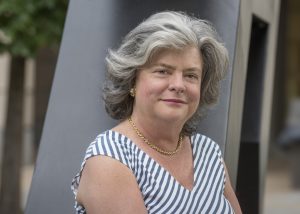 Entering her 37th (and final) year at Case Western Reserve University, Jenifer Neils—an internationally renowned scholar of ancient Greek and Roman art—has won the 2017 Baker-Nord Center Award for Distinguished Scholarship in the Humanities.
Entering her 37th (and final) year at Case Western Reserve University, Jenifer Neils—an internationally renowned scholar of ancient Greek and Roman art—has won the 2017 Baker-Nord Center Award for Distinguished Scholarship in the Humanities.
After the academic year, Neils, the Elsie B. Smith Professor in the Liberal Arts in the Department of Classics, will move to Greece, to become the first female director of the American School of Classical Studies at Athens (ASCSA) in the institution’s 135-year history.
“She’s brilliant. Prolific. Her mastery of the field is mind boggling. Her knowledge is encyclopedic,” said Rachel Sternberg, an associate professor in the Department of Classics. “This is not just her reputation (at Case Western Reserve), but all over the world.”
Before Neils leaves, she is studying a newly acquired bronze Apollo statue at the Cleveland Museum of Art, which will be the subject of her Feb. 1 lecture—“The Sauroktonos (Lizard-slayer) from Praxiteles to Charles Ray”—as part of her Baker-Nord prize.
According to the Baker-Nord Center, the award “recognizes the outstanding scholarship of [CWRU] faculty in the Humanities and their contribution to the university’s reputation. … Recipients receive $5,000 to support their research and deliver a public lecture as part of the Baker-Nord Center’s spring program.”
A magnet for classics graduate students and advanced scholars, the ASCSA is a research institute maintaining two major libraries and a laboratory, sponsoring archaeological fieldwork, offering seminars and learning expeditions, while publishing widely.
“In our field, this is where you go to get grounding in topography, monuments, temples and buildings,” said Neils, who, over her five-year directorship, will start a new excavation of a temple in Sicily. “It’s the best of both worlds because it’s studying the Greeks in Italy.
“In our field, there’s a new discovery almost every day. We’re constantly rewriting our history of the past,” added Neils, who chaired the Department of Art History and Art at Case Western Reserve from 1986 to 1998 and also served as the Ruth Coulter Heede Professor of Art History and Classics.
Neils is known in particular for her scholarship on the Parthenon, yet familiarity with the monument has not dulled her appreciation. “I still pinch myself every time I see it,” she said.
Case Western Reserve has a long and storied history with ASCSA: Its first student, Harold North Fowler, enrolled in 1881, and later become a professor of classics at the former Western Reserve University. Henry Robinson, who was classical studies chair at CWRU and held a professorship named for Fowler, directed the ASCSA from 1959 to 1969.
“The directorship is a prestigious position that few people are ever able to hold,” said Sternberg. “It’s a brilliant capstone to a brilliant career for Dr. Neils. Deeply deserved. We all admire Jenifer to no end.”
Physics’ Glenn Starkman awarded Distinguished University Professorship
Posted on August 31, 2016
 Physics Professor Glenn Starkman likes big ideas.
Physics Professor Glenn Starkman likes big ideas.
During 20 years at Case Western Reserve University, he’s tackled some of the most important questions in cosmology, particle physics and astronomy.
As he’s worked in his chosen fields, Starkman has also challenged and helped set the course for the undergraduate education and experience at Case Western Reserve, and has fostered cross-campus collaboration.
For his contributions, Starkman has been named a Distinguished University Professor. He, Mary Barkley, professor of chemistry; David Cooperrider, professor of organizational behavior; and Krzysztof Palczewski, professor of pharmacology; will be recognized during Fall Convocation at 4:30 p.m. today (Aug. 31) at Severance Hall.
Starkman credits the university, Department of Physics and fellow researchers with helping and encouraging him to push boundaries.
“I’ve spent a career working on topics that are not in the mainstream, being my own piper,” Starkman said. “That’s been an interesting and exciting way to have a scientific career.”
The keys, he said, are “incredible post docs and graduate students and not letting other people tell us what the important questions are.”
Among his accomplishments, he’s helped NASA create tools that will one day be used to image and characterize planets beyond our solar system. Having developed the first observational approaches for differentiating models of modified gravity from dark energy, his work is now at the core of dark energy surveys.
Researchers at the world’s largest particle accelerator, the Large Hadron Collider, use the computer code Starkman and colleagues developed that models the production and decay of mini-black holes to know how to search for such events.
He and colleagues have used the cosmic microwave background to characterize the shape of the universe, and discovered anomalies in that cosmic background radiation that challenge the standard theory of cosmology. They have proposed that dark matter, rather than being comprised of tiny exotic particles, may instead be dense clumps of matter that arise from the Standard Model of particle physics.
In all, he’s authored more than 150 journal articles and conference papers. He’s also won a Guggeinheim Fellowship for “exceptional capacity for productive scholarship.”
On campus, Starkman chaired the President’s Commission on Undergraduate Education and Life more than a decade ago. He encouraged members to creatively and boldly think how Case Western Reserve could provide undergraduates with an educational experience that develops the whole person, commission members recall.
As a result, the university increased interactions among students, faculty and staff in everything from admissions to dorm life, including a renewed focus on undergraduate research and experiential learning and creation of the SAGES (Seminar Approach to General Education and Scholarship) program.
Following his role on the commission, Starkman served as associate provost for the Undergraduate Initiative and became a founding board member of the Reinvention Center, a national resource for undergraduate education at research universities.
While he’s held positions focusing on the undergraduate experience, Starkman was presented a John S. Diekhoff Award for Excellence in Graduate Student Mentoring last year—an award based on nominations from graduate students.
“It’s important to be at a university where you are interacting with students at all levels,” he said.
Starkman is director of the Center for Education and Research in Cosmology and Astrophysics, which brings together faculty and students in physics and astronomy interested in cosmology.
He’s founding director of the Institute for the Science of Origins, which fosters collaboration among researchers from diverse disciplines and has brought the university, the Cleveland Museum of Natural History and the public broadcasting nonprofit Ideastream together to engage the community and leading scientists.
Recently, Starkman helped create the interdisciplinary origins sciences major, offered this fall through the collaboration of 10 departments in the College of Arts and Sciences and Case Western Reserve School of Medicine.
Department of Chemistry Chair Mary Barkley awarded Distinguished University Professorship
Posted on August 30, 2016

As chair of Case Western Reserve University’s Department of Chemistry, Mary D. Barkley guides others to academic success by blending leadership, research and life skills.
The M. Roger Clapp University Professor of Arts and Sciences was recognized for that guidance by being chosen a Distinguished University Professor, a title acknowledging the outstanding contributions of full-time, tenured professors with exceptional academic records of research, scholarship, teaching and service.
“I was totally surprised,” Barkley said, grinning. “Usually, those have been long-term members of the university community, and I moved here as a full professor in the 1996-97 academic year. More than half my career was elsewhere.”
Barkley will be one of four Distinguished University Professors celebrated during Fall Convocation on Aug. 31 at Severance Hall.
The 74-year-old biophysical chemist views the honor as another chance to serve as a role model, especially for other women or others who have been underrepresented in science research. Making the population of research scientists larger and more diverse is her passion.
“I’m grateful that more women are being recognized now,” she said. “Everyone talks about the role model effect. People dedicated to an academic career and research, as I am, do it for the science.”
College of Arts and Sciences Dean Cyrus C. Taylor, in his nomination letter to Provost William A. “Bud” Baeslack III, relied greatly on a recommendation from Professor Kathleen Kash, chair of the Department of Physics. Kash wrote about Barkley’s research and more. She noted that Barkley organizes the popular “Lady Chairs” lunch, where female chairs gather to share experiences, successes and failures, and to provide needed information to one another.
“She is known as the go-to person for advice on the many difficulties that women still face in an academic science career, and she provides wise counsel to other female faculty, graduate students and undergraduates,” Kash wrote.
Participants in a Lady Chairs lunch discuss a wide range of topics, from how to get a task done to dealing with sensitive situations, while remaining aware of confidentiality.
Barkley’s research focuses on a viral protein of HIV. She’s also worked on tryptophan fluorescence in proteins. Tryptophan is an amino acid, but it’s the only one that fluoresces well. It’s used to monitor changes in protein structure. The proteins of viruses are different from those of the cells that they infect, yet essential for the life of the virus, so viral proteins are good targets for drugs, Barkley said.
Barkley earned her PhD in physical chemistry from the University of California, San Diego. She completed her postdoctoral research at the prestigious Salk Institute for Biological Studies. Since then, she has published more than 60 papers advancing biological chemistry, and has dedicated her career to studying interactions of large proteins. She received the Biophysical Society’s Distinguished Service Award in 2003.
When she accepted a professorship at Case Western Reserve in 1996, she was one of two women hired as the first female professors in the Department of Chemistry. She was appointed chair of the Department of Chemistry in 2008, and is the first woman to be a tenured professor and hold an endowed chair in the Department of Chemistry.
Barkley cares deeply about increasing the number of women in Case Western Reserve’s science, math and engineering programs. She was involved in the 2003 NSF-ADVANCE Institutional Transformation Award that funded the university’s continuing Academic Careers in Engineering and Science (ACES) Program.
Biology’s Valerie Haywood presents at American Society of Plant Biologists annual conference
 AUGUST 19, 2016
AUGUST 19, 2016
Valerie Haywood, senior instructor of biology, presented her ongoing work in undergraduate biology education at Plant Biology 2016, the annual meeting of the American Society of Plant Biologists, in Austin, Texas, in July. More than 1,300 scientists from nearly 40 countries participate in the meeting each year.
Haywood’s talk, ”Connect the Dots: Using Concept Maps to Overcome Students Misconceptions About Photosynthesis,” added to the growing body of evidence that has established the value of active learning in the classroom. Haywood’s work further demonstrated how teachers may unknowingly promote student misconceptions, underscoring the importance of classroom assessment.
Excerpt of Ross Duffin’s chapter on music in Shakespeare’s plays published by Oxford University Press

JULY 22, 2016
The Oxford University Press published an excerpt from Ross Duffin’s chapter in the Oxford Handbook of the Age of Shakespeare.
Duffin, the Fynette H. Kulas Professor of Music, wrote a chapter titled “Music and the Stage in the Time of Shakespeare.”
He explained the history of instruments from William Shakespeare’s era and how music would have been used during his productions.
Sports practice accounts for just 1 percent of the performance differences among elite athletes

Brooke Macnamara
Among elite athletes, practice accounts for a scant 1 percent of the difference in their performances—and starting sports at an early age does not necessarily provide athletes an upper hand—according to new research.
“While practice is necessary for elite athletes to reach a high level of competition, after a certain point, the amount of practice essentially stops differentiating who makes it far and who makes it to the very top,” said Brooke Macnamara, assistant professor of psychological sciences at Case Western Reserve University and lead author of the study.
“Human performance is incredibly complex,” she said. “Multiple factors need to be considered, only one of which is practice.”
The study was published in Perspectives on Psychological Science, with researchers analyzing 52 data sets on the relationship between practice and performance.
Athletes, parents, recruiters and coaches can use the findings to weigh the importance of practice time and investment, researchers suggest.
Overall, practice explains about 18 percent of why some athletes perform better or worse than others—with 82 percent of this difference attributed to factors other than practice.
The findings counter the notion that anyone can become an expert or elite athlete with 10,000 hours of practice, a theory inspired by research from Florida State University professor Anders Ericsson in the early 1990s and popularized in the mainstream since.
“The concept of 10,000 hours taps into the American ideal of hard work and dedication leading naturally to excellence,” said Macnamara. “But it does not account for the inherent differences across people and across sports.”
Starting age holds little to no advantage
While some research has suggested a younger starting age provides an athlete more time to build skills critical to attaining high performance levels, Macnamara’s findings offer contradictory evidence.
Higher-skill athletes start at about the same age as less-skilled athletes—or even began a little later—according to Macnamara’s research. In fact, athletes may benefit from waiting to specialize in one sport: A more physically mature athlete can accomplish the fundamentals of an activity more easily, with a lower risk of injury from overuse.
“People and parents who buy into the 10,000-hour rule can push early specialization in a sport, leading to physical or mental burnout before it’s clear that a child even has a penchant for that sport,” Macnamara said.
Factors other than practice believed to influence athletic performance include genetic attributes, such as fast-twitch muscles and maximum blood oxygenation level; cognitive and psychological traits and behaviors—including confidence, performance anxiety, intelligence and working memory capacity—play roles as well, though researchers don’t yet know the significance of each.
“As we look at multiple factors, I don’t think we’ll ever be able to—with 100 percent certainty—predict someone’s performance in any activity, not just sports,” Macnamara said. “But we can do better than we’re doing now.”
Study co-authors are David Moreau, a research fellow in the Centre for Brain Research at the University of Auckland, and David Z. Hambrick, a psychology professor at Michigan State University.
Faculty Accomplishments
 Karen Abbott, Associate Professor of Biology, was named the 2015 Early Career Fellow of the Ecological Society of America. She also published six peer-reviewed papers and received a Co-PI, NSF-funded collaborative grant to research the role of soil micro-organisms in driving plant species turnover.
Karen Abbott, Associate Professor of Biology, was named the 2015 Early Career Fellow of the Ecological Society of America. She also published six peer-reviewed papers and received a Co-PI, NSF-funded collaborative grant to research the role of soil micro-organisms in driving plant species turnover.
Henry A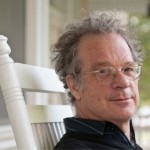 dams, Ruth Coulter Heede Professor of Art History, received the 2015 ARTneo Admiration Award as well as the Kemper Foundation grant for Thomas Hart Benton Catalogue Raisonne. He also published the book John Raimondi: Drawing to Sculpture and had essays featured in two books: “Fire, Breath, and Light: The Glass of Dale Chihuly” (in Chihuly: On Fire) and “The Architectural Drawings of Thomas Jefferson” (in The Private Jefferson: Perspectives from the Collections of the Massachusetts Historical Society)
dams, Ruth Coulter Heede Professor of Art History, received the 2015 ARTneo Admiration Award as well as the Kemper Foundation grant for Thomas Hart Benton Catalogue Raisonne. He also published the book John Raimondi: Drawing to Sculpture and had essays featured in two books: “Fire, Breath, and Light: The Glass of Dale Chihuly” (in Chihuly: On Fire) and “The Architectural Drawings of Thomas Jefferson” (in The Private Jefferson: Perspectives from the Collections of the Massachusetts Historical Society)
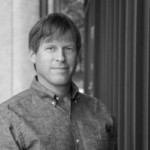 Timothy Beal, Florence Harkness Professor of Religion and Chair of the Department of Religious Studies, served as the Editor in Chief for The Oxford Encyclopedia of the Bible and the Arts, Vol 1 & 2.
Timothy Beal, Florence Harkness Professor of Religion and Chair of the Department of Religious Studies, served as the Editor in Chief for The Oxford Encyclopedia of the Bible and the Arts, Vol 1 & 2.
 Jeremy Bendik-Keymer, Elmer G. Beamer-Hubert H. Schneider Professor in Ethics and Associate Professor of Philosophy, is the author of Solar Calendar, and Other Ways of Marking Time.
Jeremy Bendik-Keymer, Elmer G. Beamer-Hubert H. Schneider Professor in Ethics and Associate Professor of Philosophy, is the author of Solar Calendar, and Other Ways of Marking Time.
 Lauren Calandruccio, Assistant Professor of Psychology, was appointed as Editor for the American Journal of Audiology and to the Board of Trustees for the American Society of Hematology Foundation. She was also awarded Principal Investigator and Co-Investigator grants from the National Institute on Deafness and other Communication Disorders.
Lauren Calandruccio, Assistant Professor of Psychology, was appointed as Editor for the American Journal of Audiology and to the Board of Trustees for the American Society of Hematology Foundation. She was also awarded Principal Investigator and Co-Investigator grants from the National Institute on Deafness and other Communication Disorders.
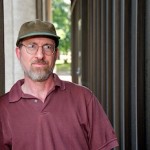 Dan Cohen, Associate Professor of History, appeared as a guest on the public radio program and podcast “Court of Public Opinion: A History of Trial-Watching in America”
Dan Cohen, Associate Professor of History, appeared as a guest on the public radio program and podcast “Court of Public Opinion: A History of Trial-Watching in America”
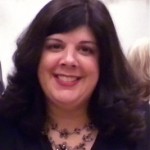
Jill Davis, Assistant Professor of Theater, traveled to London to design scenery and costumes for the play CHEZ FEYDEAU, directed by Geoffrey Bullen for the Royal Academy of Dramatic Art.
 William Deal, Severance Professor in the History of Religion and Chair of the Department of Cognitive Science, co-authored A Cultural History of Japanese Buddhism.
William Deal, Severance Professor in the History of Religion and Chair of the Department of Cognitive Science, co-authored A Cultural History of Japanese Buddhism.
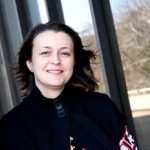
Diana Driscoll, instructor of Physics, was nominated for the Carl F. Wittke Award for Excellence in Undergraduate Teaching and the J. Bruce Jackson, MD, Award for Excellence in Undergraduate Mentoring.
 Linda Ehrlich, Associate Professor of Japanese, is the author of The Girl Who Turns into a Tree.
Linda Ehrlich, Associate Professor of Japanese, is the author of The Girl Who Turns into a Tree.

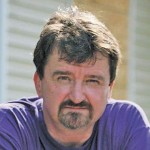 Mary Erdmans and Timothy Black, Associate Professors of Sociology, won the 2015 Betty and Alfred McClung Lee Book Award from the Association for Humanist Sociology for On Becoming a Teen Mom: Life Before Pregnancy.
Mary Erdmans and Timothy Black, Associate Professors of Sociology, won the 2015 Betty and Alfred McClung Lee Book Award from the Association for Humanist Sociology for On Becoming a Teen Mom: Life Before Pregnancy.
 John Flores, Climo Junior Professor and Assistant Professor of History, received the 2015 Richard A. Bloom, M.D., Award for Distinguished Teaching in the SAGES Program
John Flores, Climo Junior Professor and Assistant Professor of History, received the 2015 Richard A. Bloom, M.D., Award for Distinguished Teaching in the SAGES Program
 John Grabowski, Krieger-Mueller Joint Professor in History, was featured in Crain’s Cleveland Business article “Lessons from the past can help grow our region’s future.”
John Grabowski, Krieger-Mueller Joint Professor in History, was featured in Crain’s Cleveland Business article “Lessons from the past can help grow our region’s future.”
 David Hammack, Hiram C. Haydn Professor of History, gave a plenary talk for the Association for Research on Nonprofit Organizations and Voluntary Actions at its 2015 conference in Chicago.
David Hammack, Hiram C. Haydn Professor of History, gave a plenary talk for the Association for Research on Nonprofit Organizations and Voluntary Actions at its 2015 conference in Chicago.
 Walter Lambrecht, Professor of Physics, wrote a chapter titled “Electronic structure of magnetic impurities and defects in semiconductors: a guide to the theoretical models” in Rare Earth and Transition Metal Doping of Semiconductor Materials, 1st Edition. He also co-authored a paper titled “Quasiparticle self-consistent GW calculations of the electronic band structure of bulk and monolayer V2O5.”
Walter Lambrecht, Professor of Physics, wrote a chapter titled “Electronic structure of magnetic impurities and defects in semiconductors: a guide to the theoretical models” in Rare Earth and Transition Metal Doping of Semiconductor Materials, 1st Edition. He also co-authored a paper titled “Quasiparticle self-consistent GW calculations of the electronic band structure of bulk and monolayer V2O5.”
 Kelly McMann, Associate Professor and Director of the International Studies Program, worked as part of a global research team to complete the Varieties of Democracy dataset, which measures more than 350 indicators of democracy from 1900 to the present for each country of the world. She also received honorable mention for the Ed A Hewett Book Prize for outstanding publication on the political economy of Russia, Eurasia and/or Eastern Europe for her book Corruption as a last Resort.
Kelly McMann, Associate Professor and Director of the International Studies Program, worked as part of a global research team to complete the Varieties of Democracy dataset, which measures more than 350 indicators of democracy from 1900 to the present for each country of the world. She also received honorable mention for the Ed A Hewett Book Prize for outstanding publication on the political economy of Russia, Eurasia and/or Eastern Europe for her book Corruption as a last Resort.
 Suhaan Mehta, full-time lecturer in the Department of English, received the 2016 Richard A. Bloom, M.D., Award for Distinguished Teaching in the SAGES Program.
Suhaan Mehta, full-time lecturer in the Department of English, received the 2016 Richard A. Bloom, M.D., Award for Distinguished Teaching in the SAGES Program.
 Roy Ritzmann, Professor of Biology, received the National Science Foundation 4-year collaborative grant for “Modulatory Role of Central Complex Brain Systems in Context Dependent Predation of Three Mantis Species” in collaboration with Gavin Svensson, Principal Investigator, and the Cleveland Museum of Natural History.
Roy Ritzmann, Professor of Biology, received the National Science Foundation 4-year collaborative grant for “Modulatory Role of Central Complex Brain Systems in Context Dependent Predation of Three Mantis Species” in collaboration with Gavin Svensson, Principal Investigator, and the Cleveland Museum of Natural History.
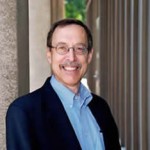 Alan Rocke, Distinguished University Professor and Henry Eldridge Bourne Professor of History, served as the chief historical adviser on the three-part PBS television series “The Mystery of Matter: The Search for the Elements,”
Alan Rocke, Distinguished University Professor and Henry Eldridge Bourne Professor of History, served as the chief historical adviser on the three-part PBS television series “The Mystery of Matter: The Search for the Elements,”
 Sandra Russ, Distinguished University Professor and Louis D. Beaumont University Professor of Psychological Sciences, received the 2015 Rudolf Arnheim Award for Outstanding Achievement in Psychology and the Arts from Division 10, American Psychological Association.
Sandra Russ, Distinguished University Professor and Louis D. Beaumont University Professor of Psychological Sciences, received the 2015 Rudolf Arnheim Award for Outstanding Achievement in Psychology and the Arts from Division 10, American Psychological Association.
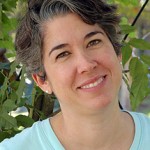 Reneé Sentilles, Associate Professor of History, was interviewed about her biography of Adah Isaac Menken, titled Performing Menken: Adah Isaacs Menken and the Birth of American Celebrity, for a Louisiana Anthology Podcast.
Reneé Sentilles, Associate Professor of History, was interviewed about her biography of Adah Isaac Menken, titled Performing Menken: Adah Isaacs Menken and the Birth of American Celebrity, for a Louisiana Anthology Podcast.
 Peter Shulman, Associate Professor of History, is the author of Coal and Empire: The Birth of Energy Security in Industrial America. He also received media recognition for his Twitter account (@HistOpinion) after several of his tweets went viral.
Peter Shulman, Associate Professor of History, is the author of Coal and Empire: The Birth of Energy Security in Industrial America. He also received media recognition for his Twitter account (@HistOpinion) after several of his tweets went viral.
 Gillian Weiss, Associate Professor of History, was awarded the ACLS Collaborative Grant with art historian Meredith Martin of New York University for an interdisciplinary study: The Sun King at Sea: Maritime Art and Slavery During the Reign of Louis XIV.
Gillian Weiss, Associate Professor of History, was awarded the ACLS Collaborative Grant with art historian Meredith Martin of New York University for an interdisciplinary study: The Sun King at Sea: Maritime Art and Slavery During the Reign of Louis XIV.
 Elisabeth Warner, Professor in the Department of Mathematics, Applied Mathematics and Statistics, was invited to deliver the Winter 2016 Fejes Tóth Lecture at the University of Calgary. Her lecture is titled, “Best and random approximation of convex bodies by poltyopes.”
Elisabeth Warner, Professor in the Department of Mathematics, Applied Mathematics and Statistics, was invited to deliver the Winter 2016 Fejes Tóth Lecture at the University of Calgary. Her lecture is titled, “Best and random approximation of convex bodies by poltyopes.”
 Rhonda Williams, Associate Professor of History, led an independent Cleveland Community Police Commission with the aim to reform the department that the U.S. Department of Justice identified as engaging in a pattern of excessive force and civil rights violations.
Rhonda Williams, Associate Professor of History, led an independent Cleveland Community Police Commission with the aim to reform the department that the U.S. Department of Justice identified as engaging in a pattern of excessive force and civil rights violations.
